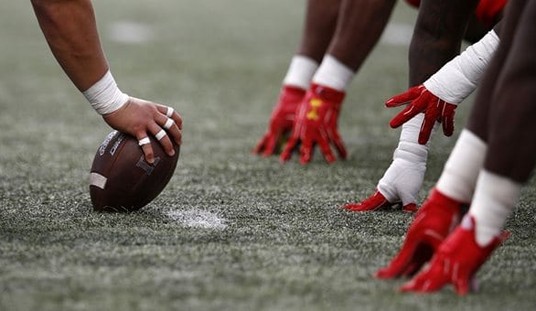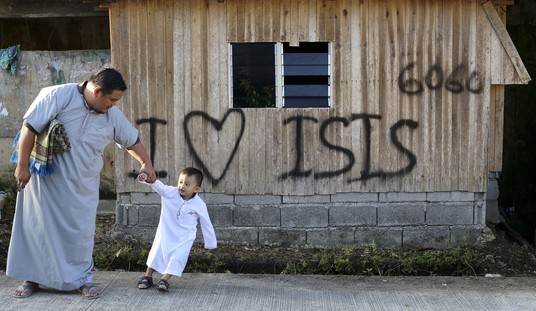=========
=========
Promoted from the diaries by streiff. Promotion does not imply endorsement.
=========
=========

I have been kind of reluctant to write this diary entry for various reasons, not least of which is the complexity of the issue. The public has been burned many times expressing outrage at the shooting of unarmed suspects at the hands of police only to find out, after all the facts have been gathered, the narrative on the cell phone video shows only the end result. Many pertinent facts leading up to fatal police shootings are not known in the emotional aftermath. The events in Ferguson, Missouri and the “Hands up, Don’t Shoot” narrative did not quite square with the facts in that case.
Furthermore, it is easy to sit and view things in hindsight and play armchair quarterback since we are not in the position of law enforcement officers day in and day out, sometimes in dangerous situations. There are, of course, deviations. Furthermore, these incidents are all too often used to stoke racial accusations. Contrary to popular belief and available statistics, whites, Hispanics, Asians and Native Americans have also been shot and killed by police officers, often at a greater rate than blacks.
The problem, this writer believes, lies in the doctrine of qualified immunity officers receive in these cases. That doctrine shields officers and officials from liability in damages actions unless they violate “clearly established law.” Unfortunately, we cannot get to “clearly established law” because we are stuck in a legal, logical Catch-22 game of Ring-Around-The-Rosie.
Lest anyone believe that this is a liberal belief, Justice Clarence Thomas has questioned the very practice itself and the historical reasons for it. The doctrine is allegedly rooted in common law and dates to the Civil Rights Act of 1871. Since qualified immunity was first asserted and given its mark of acceptance by the Court, this alleged common law nexus has been used as justification. However, as Thomas rightfully has noted, it has no resemblance to the common law in 1871. Then, government officials could not assert a good faith defense to liability. An official could petition for indemnification and escape financial liability. But as things stood in 1871, good faith or not, officials were held liable.
Later, perhaps realizing some of the common law argument shortcomings, the Supreme Court jettisoned the subjective good faith understanding of qualified immunity in the case Harlow vs. Fitzgerald in 1982. Then the Court used the standard of whether an officer’s conduct was objectively unreasonable. Hence, even when a plaintiff can clearly demonstrate an officer was acting in bad faith, that became irrelevant. Instead, the Court repackaged qualified immunity to shield officials against various harms associated with lawsuits.
In fact, the list of harms to be protected against grew in 1982. Since then, Justice Breyer has questioned qualified immunity for those sure to be shielded from financial liability by their employers. There are studies that give this view some justification. One such study found that over a six-year period, individual officers paid very little in settlements. Nor did they even pay for defense counsel as that was provided by the city, an insurer, or a union. One study found that 9,225 cases were settled with payment to a plaintiff costing, collectively, $735 million. In just 0.41% of the cases did an officer contribute anything to the settlement, and of the $735 million, individual officers contributed 0.02%. In that study, $9.3 million in punitive damages were awarded and individual officers paid not a penny. Punitive damages are reserved for the most egregious cases and still individual officers paid nothing!
Justice Kennedy has questioned qualified immunity as a shield against lawsuits given the Court’s summary judgment jurisprudence which often sides with the lower courts. Sometimes that summary judgment results in the case being thrown out altogether given the facts before a judge, sometimes it results in an out-of-court settlement and sometimes it results in an actual trial- rarely the latter.
Justice Sotomayor (along with Ginsburg) have questioned whether qualified immunity run amok has led to an atmosphere of “shoot first, ask questions later.” There may some truth in that belief. Under the current standard, lower courts are to determine what a reasonable officer acting under similar circumstances would reasonably do. If “shoot first, ask later” is the standard of reasonableness, then the Fourth Amendment means little. Unfortunately, not all circumstances contain an identical set of facts, hence there is no standard of reasonableness and qualified immunity kicks in.
There are decades of jurisprudence analyzing when using excessive force against fleeing or belligerent suspects is acceptable. However, these decisions are not uniform across all districts or Appeals Circuits, or even nationally. Modern technology has certainly complicated the issue. For example, what are the Constitutional rights of people to record the police? What about use of Tasers and other technology?
Obviously, not all cases of alleged excessive use of police force are due their day in court. Despite drawbacks in some cases (OJ Simpson comes to mind), judges and juries do an exceptional job of parsing fact from fiction and there is probably no better system in the world. But in many cases, the Supreme Court has foreclosed that option using a doctrine not historically moored in common law as Justice Thomas has stated, nor in the practical sense as Justice Breyer has suggested, nor in the legal sense as Justice Kennedy has intimated. Leaving aside the Sotomayor-Ginsburg theory that qualified immunity had bred a culture of police violence, the sentiments of Thomas, Breyer and Kennedy lend great credence to the belief that the doctrine of qualified immunity for police officers needs reconsideration.
And if a few well-publicized settlements or judgments have police thinking twice before pulling the trigger in certain circumstances, then and only then will we know if the Sotomayor-Ginsburg theory is correct.














Join the conversation as a VIP Member